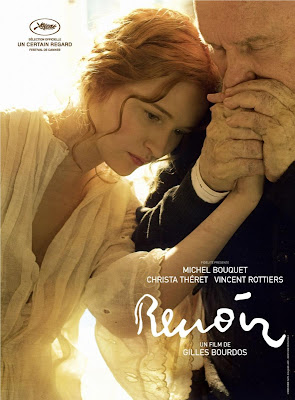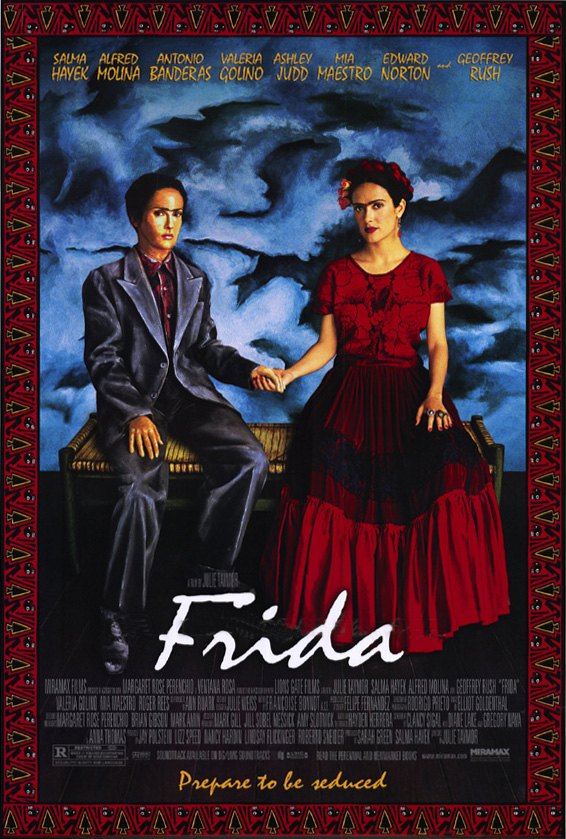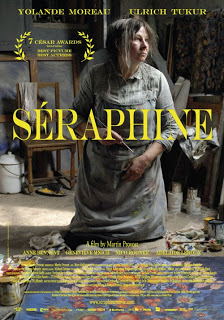 |
| Poster for French film, Renoir. |
Written by Janyce Denise Glasper
Gilles Bourdos’ Renoir is a feast for an art appreciator’s enjoyment, opening on lush, brilliant cinematography and a flaming red-haired woman riding a vintage bicycle dressed in vivid orange coat, brown kid gloves, and rounded sunglasses.
This is Andrée Heuschling bringing forth a brazen, illustrious spirit to a real life triad.
More than young, ripened flesh for master French Impressionist painter, Pierre-Auguste Renoir’s eyes, Andrée amuses and delights both him and his son, future filmmaker Jean Renoir.
Set five years before his death, aging painfully with arthritis overwhelming old hands and body confined to a wheelchair, Pierre still finds pleasure in painting and undergoes wince-filled treatments just to sit at his beloved easel. He is surrounded by former models and lovers who proudly cater to his every whim–giving him baths, mixing paints, etc.
 |
| Andrée (Christa Theret) poses for Pierre-Auguste Renoir (Michel Bouquet). |
Andrée doesn’t long for that servitude.
She arrives at Renoir’s door solely wanting to model.
Lithe and graceful, laying smooth alabaster skin among colored textile chaises inside cluttered studio or among outdoor grasses on blankets, Andrée courts Pierre’s every instruction and lavishes attentiveness in natural, beguiling light. As his gnarled, knobby hands sketch rounded figure, pencils lingering on back as though touching with fingers instead of eyes, she chatters away animatedly and is unabashed about nudity. She sees posing for art as a job and has no interest in becoming domesticated.
Jean returns from war, injured and limping.
Immediately, the quiet young man is enchanted by Andrée’s personality. She gets him to escape out of his comfort zone, and the two fall into a serene kind of love that is soft and at times erotically charged without overtly sensual love scenes. In one surprising act, the two are in bed, and she puts lipstick on his lips and kisses him passionately, redness coating her mouth upon exchange.
Although nude and unapologetic, seen visually as a still life to wrinkled, nearly dying Pierre, Andrée’s relationship with Jean is much more intimate and private, an exchanging of tranquil stares and gentle touching that occurs away from the eyes of the household.
 |
| Andrée (Christa Theret) finds love in Jean Renoir. (Vincent Rottiers) |
One short, small scene did incite a furious spark.
Studio doors are opened and inviting while Andrée sleeps without a trace of Pierre. Fabric leaves bared breasts and rounded up thrust waist vulnerable to anyone’s gaze. In steps the younger, darkly disturbed son–Pierre the junior, circles Andrée with predatory sharpness. He then takes a bowl of blue pigment, hovers close, and blows wisps of it onto her skin.
Whether it happened to be a dream or bumpy reality, this moment disturbed the order of things in Andrée’s carefree, liberated world, and it wasn’t even addressed. Pierre the younger certainly gave off a terribly sinister vibe that he would inflict harm unbeknownst to anyone and ignited an ire as if troubling behavior spoke of eventual abuse toward women.
Christa Theret captures a natural human richness into Andrée. With raspy voice and expressive blue eyes, she offers breadth into a brazen, outspoken character at a time where domesticity still placed women inside a box. To Pierre, she is a motherly comrade, cradling cheek and expressing gratitude to elder patron, but to Jean, she provides him keys necessary to unlock sensitive shell and incites an awakened passion to make film. Andrée knows that she is beautiful, but is also commanding, brave, and intelligent, valuing only for respect, decency, and to break the mold of her sensitively depicted gender.
 |
| Andrée (Christa Theret) in most scenes is shown as a piece of art. |
However, picturesque Renoir suffers from too much opulence and grandeur, focusing too heavily on Andrée’s lusty body and lovely scenery that purposefully mimics Renoir’s infamously luminous compositions. But that’s supposedly Impressionism’s meaning–all the colors without a paintbrush dipping into black.
Andrée simply stimulated the Renoir men’s taste for sensual inspiration and artistic expression–a muse catering toward creative distraction.
Nothing more. Nothing less.













